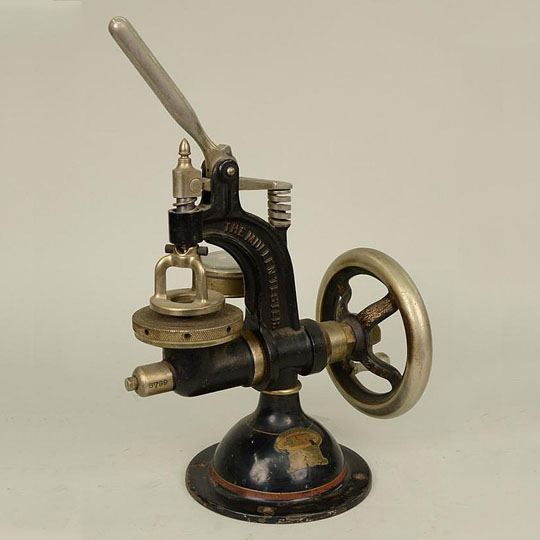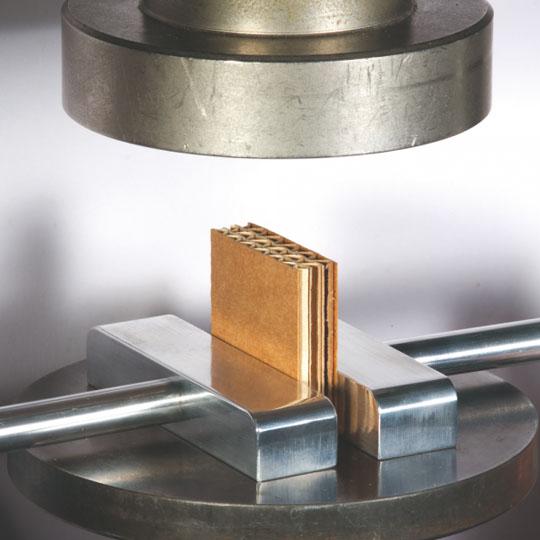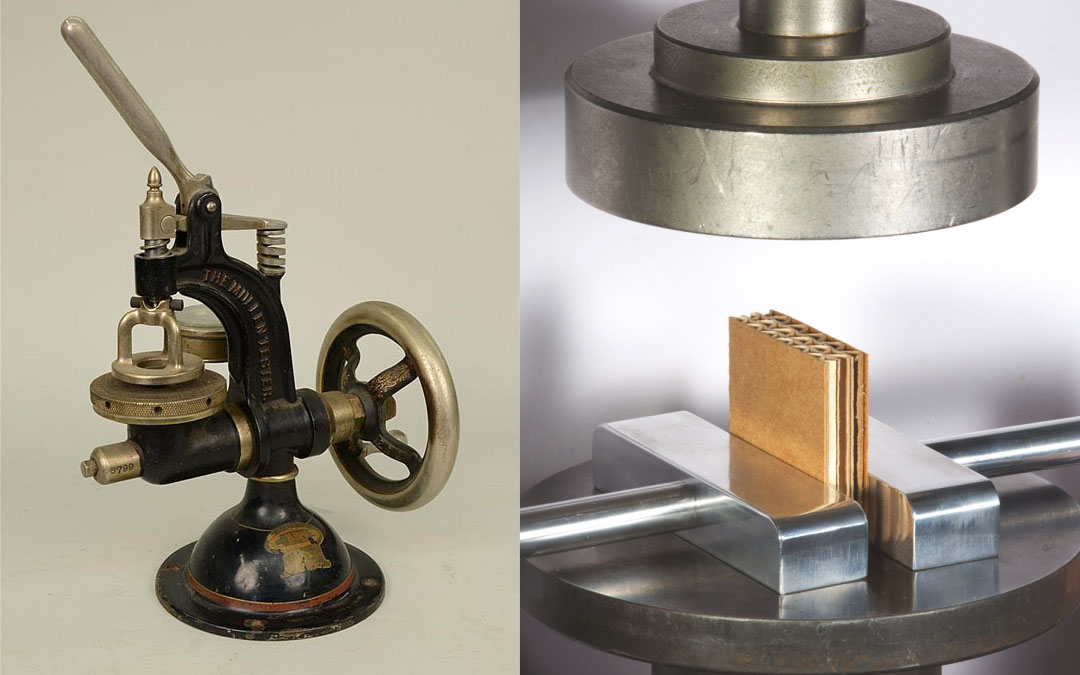Hands down, the most important feature of a box is that it keeps its contents safe.
That feature’s judged by two separate and not-so-equal ratings – The Mullen Test and ECT (Edge Crush Test). And like throwing two mismatched fighters into a ring, one definitely gets the other on the ropes pretty quickly.
So, before a winner’s declared, let’s check out their stats and see whom you should bet on.
In That Corner: The Mullen Test

The Mullen Test dates back to 1909, when boxes were shipped individually, packed improperly, and carried by rail.
A hydraulic contraption with an inflatable rubber diaphragm would apply pressure to the broadside of corrugated cardboard until it caved in or burst (which is where the test also got its other name, the burst test).
It was important for a box to handle irregular shaped goods and stand up to shifting damage, meaning boxes had to be thicker. Which also meant they ended up being heavier, needing more material and costing more to construct.
And then a new player came onto the scene and changed up the shipping game.
In This Corner: ECT (Edge Crush Test)

ECT burst onto the scene in 1991, a response to evolving shipping and environmental needs.
Gone were those improperly packed boxes full of irregular goods, as merchandise started to ship in their own individual boxes and were packed properly to avoid bursting in transit. Thanks to the use of pallets—the new player in town—boxes were being stacked up taller and in groups. This meant stress moved from the broadsides of the box to its edges, which is where the edge crush test comes from.
Thanks to a progressive little fella named engineering, stacking properly packed boxes minimizes the threat of burst damage. And since the sides are off the hook, ECT means a box can be made lighter and contain more recycled material, while still keeping 100% of the strength of a Mullen-rated box. In fact, recycled material performs best and lasts longest in ECT-rated boxes.
Plus, it’s perfect for building box castles. ECT should TKO on that fact alone!
And Now, For the Final Weigh-In of The Mullen Test vs ECT
Still mulling the odds? Let’s get both fighters on the scale.
Mullen’s fighting weight for a standard box comes with a 200 lb. side-burst rating, but a maximum carry weight of no more than 65 lbs. That’s a fraction of what you’d expect it to cart around. Meanwhile, that same box built with ECT in mind has an edge rating of 32 and the same carrying weight.
Just like your favourite gum, ECT doubles your pleasure and your shipping weight limit.
Mullen’s like the heavyweight who’s earned his retirement. He’s had his time, and there’s no shame in reclining back, sipping iced tea and watching the sun get low on the horizon. In fact, we know of a few retirement homes that serve really excellent kidney mush on Tuesdays.
ECT’s the real scrapper, punching above his weight and bringing the fight today’s audience needs.
When it comes to the Mullen Test vs ECT, packaging experts overwhelmingly agree: An ECT a day keeps a burst Mullen away.
Image Source: Pinterest




